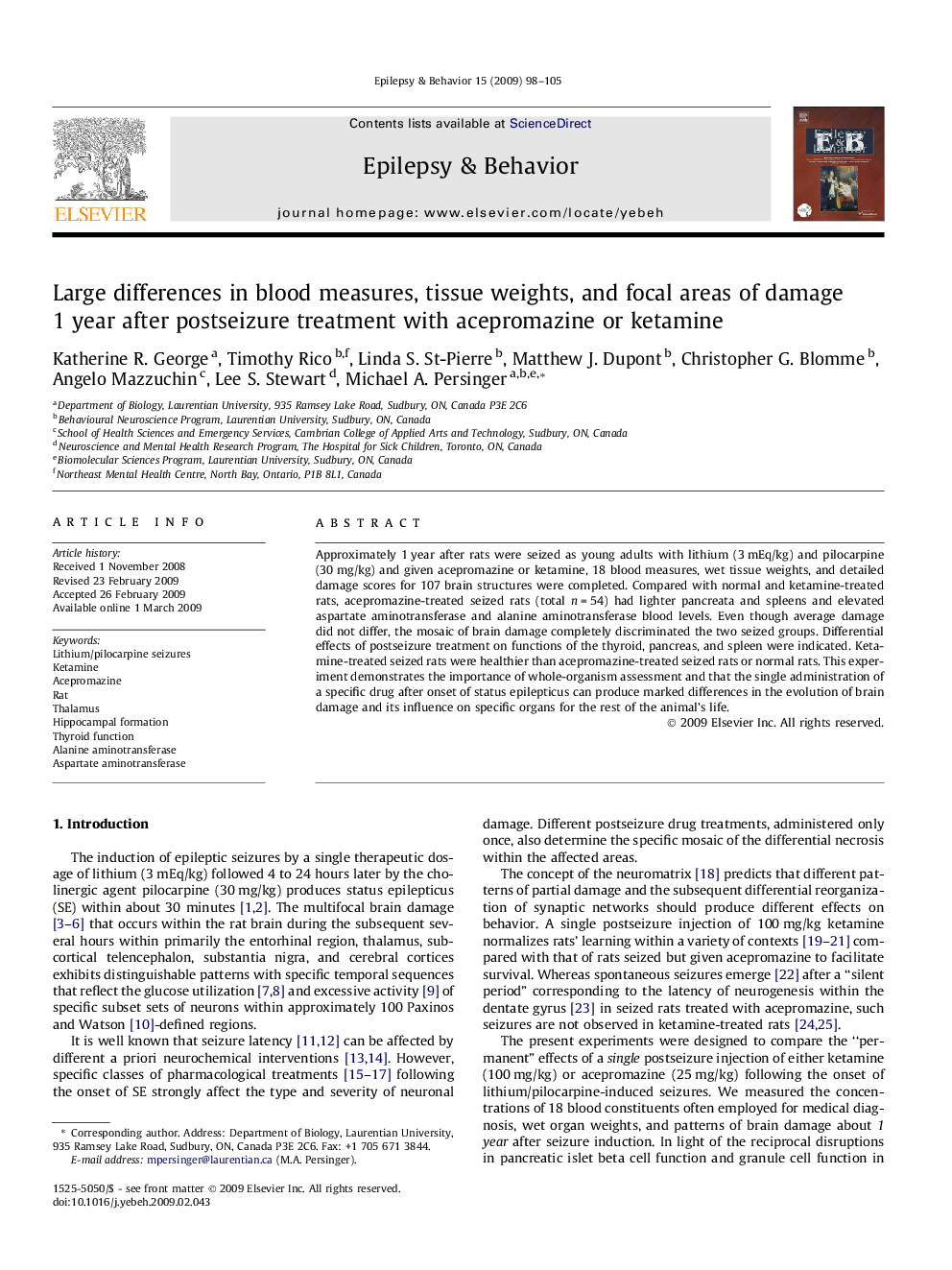| Article ID | Journal | Published Year | Pages | File Type |
|---|---|---|---|---|
| 3050637 | Epilepsy & Behavior | 2009 | 8 Pages |
Abstract
Approximately 1 year after rats were seized as young adults with lithium (3 mEq/kg) and pilocarpine (30 mg/kg) and given acepromazine or ketamine, 18 blood measures, wet tissue weights, and detailed damage scores for 107 brain structures were completed. Compared with normal and ketamine-treated rats, acepromazine-treated seized rats (total n = 54) had lighter pancreata and spleens and elevated aspartate aminotransferase and alanine aminotransferase blood levels. Even though average damage did not differ, the mosaic of brain damage completely discriminated the two seized groups. Differential effects of postseizure treatment on functions of the thyroid, pancreas, and spleen were indicated. Ketamine-treated seized rats were healthier than acepromazine-treated seized rats or normal rats. This experiment demonstrates the importance of whole-organism assessment and that the single administration of a specific drug after onset of status epilepticus can produce marked differences in the evolution of brain damage and its influence on specific organs for the rest of the animal's life.
Keywords
Related Topics
Life Sciences
Neuroscience
Behavioral Neuroscience
Authors
Katherine R. George, Timothy Rico, Linda S. St-Pierre, Matthew J. Dupont, Christopher G. Blomme, Angelo Mazzuchin, Lee S. Stewart, Michael A. Persinger,
